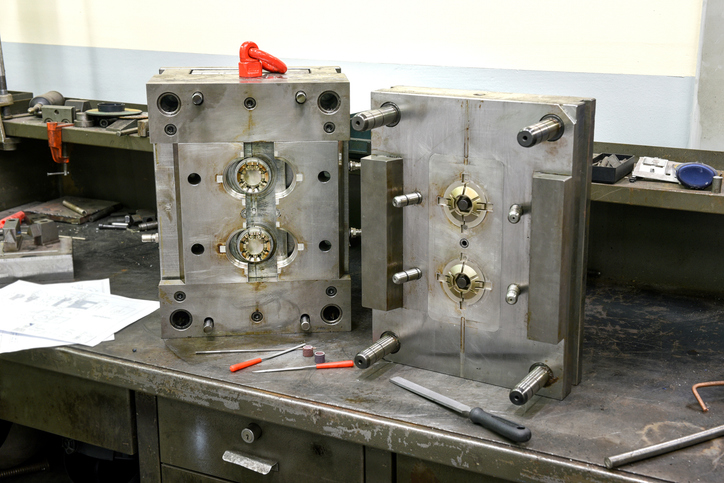Switching injection molders is rarely a decision made lightly. Whether it’s due to declining part quality, ongoing delays, or the need for a more capable partner, transferring your mold tooling introduces both risk and opportunity. For many OEMs, the prospect of downtime or production delays can be a real concern. But with the right partner — one with deep experience in injection mold tooling services — the process doesn’t have to be disruptive. In fact, it can be the start of more reliable, efficient, and cost-effective production.
Here’s what to expect when transferring tooling to a new molder, and why a well-executed transition is key to protecting part quality, lead times, and overall program success.
Why OEMs Transfer Injection Mold Tooling
OEMs rarely transfer tooling on a whim. More often, it’s a business-critical decision prompted by recurring production issues or shifting strategic priorities. Problems like inconsistent part quality, missed deadlines, and climbing costs can all undermine confidence in a supplier relationship.
Beyond solving pain points, tooling transfers are often part of larger supply chain strategies. Some OEMs are reshoring production to gain greater control or improve IP security. Others are diversifying their supplier base to minimize risk or prepare for growth into new product categories. In every case, the goal is the same: to find a manufacturing partner that better aligns with the company’s long-term needs and standards.
What to Look for in Injection Mold Tooling Services
Not every molder is equipped to support tooling transfers. For a smooth transition and sustained production success, the partner you choose should offer a full suite of tooling services — not just part production. That includes the ability to evaluate incoming tools, identify wear or damage, and perform repairs or refurbishments as needed. Engineering capabilities like DFM analysis also play a critical role in resolving legacy issues and extending the life of the mold.
If you’re working with high-performance thermoplastics (such as PEEK, PEI, or PPS) materials expertise becomes even more important. These resins require precise process control and mold designs optimized for their unique properties. A partner without this experience may struggle to hit your dimensional and cosmetic requirements, even with a solid mold.
Tooling complexity is another key consideration. Multi-cavity, hot runner, or tightly toleranced molds demand careful handling and extensive technical experience. Look for a partner that has a track record of working with similar tools and can confidently manage engineering changes when needed.
The Mold Transfer Process: Step-by-Step
Once you’ve selected a new partner, the mold transfer process typically follows a structured path designed to minimize downtime and protect part quality. In most cases, it will look something like this:
- Initial mold inspection and documentation: When the mold arrives, the new molder performs a thorough inspection. This includes documenting tool condition, confirming mold components, and checking for wear or damage. They’ll also verify mold specs against the original part design.
- Trial runs and sample approval: After setup and mold prep, the team runs initial production trials to produce first-article samples. These samples are reviewed internally and/or submitted to the customer for approval before moving forward.
- Mold refurbishment or engineering changes (if needed): If any issues are uncovered during trials — such as flash, short shots, or cosmetic defects — the tooling team may recommend repairs, refurbishment, or engineering changes to bring the mold back to optimal condition.
- Transition to full production: Once the mold is qualified and approved, full production begins. Your new molder should provide clear production timelines, quality checkpoints, and reporting protocols from day one.
Risk Mitigation and Best Practices
Tooling transfers aren’t without risk, but the right approach can make all the difference. Upfront planning and open communication are essential. Before you even move a mold, your new partner should be asking smart, specific questions about the tool’s history, condition, and performance expectations.
Once the process begins, transparency remains critical. You should expect clear documentation at every stage, from initial mold inspection through sample approval and full production. Your molder should also be proactive about flagging potential issues and proposing solutions, rather than waiting for problems to emerge downstream.
Ultimately, the best way to avoid costly surprises is to work with a team that sees tooling not just as a one-time transfer, but as an ongoing responsibility. That mindset helps ensure your transferred tool performs as expected, now and over the long term.
Work with Ensinger for Injection Mold Tooling Services
Changing molders doesn’t have to mean production delays or requalification headaches. With the right partner, your tooling can hit the ground running.
Ensinger’s injection molding division specializes in seamless mold transfers, particularly for OEMs working with high-performance thermoplastics and complex part requirements. From inspection and trial runs to full production, we’re equipped to manage the process with minimal disruption and maximum precision.
Contact us today to discuss your mold transfer project or request a quote.
